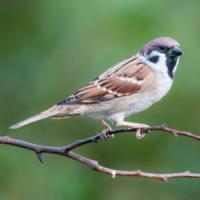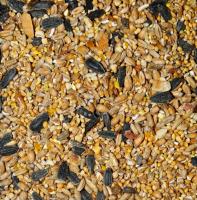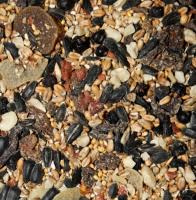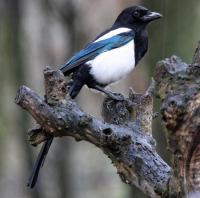- Home
- FAQs
- Customer Video Gallery
- Customer Photo Gallery
- Bird Facts
- Bird Food Blog
- Bird Information
- Feeding Advice
- Small Animal Information
- A to Z of Guinea Pigs
- A to Z of Hamsters
- A to Z of Rabbits
- Basic Care for Guinea Pigs
- Basic Care for Hamsters
- Basic Care for Rabbits
- Basic care for Chinchillas
- Basic care for Ferrets
- Basic care for Gerbils
- Basic care for Mice
- Basic care for Rats
- Buying a Healthy Small Animal
- Does your Reptile need a Licence
- Equipment for Ferrets
- Equipment for Hamsters
- Equipment for Mice
- Equipment for your Chinchilla
- Equipment for your Gerbil
- Equipment for your Guinea Pig
- Equipment for your Rabbit
- Keeping a House Rabbit
- Dog Information
- Cat Information
- Customer Information
- Fat Balls
- Suet Pellets
- Straights
- Seed Mixes
- Suet Treats
- Mealworms
- Bird Feeders
- My Account

| Scientific Name | Passer domesticus |
| Breeding | May |
| Fledge Days | 15-17 |
| Incubation Days | 13-15 |
| Lifespan | 3 years |
| Number of Clutches | 2-3 |
| Number of Eggs | 4-5 |
| Size | 14 - 15cm |
| Weight | 34g |
| Wingspan | 24cm |
Bird Family : Sparrows
House Sparrow Facts - Information About House Sparrow
House Sparrow - Passer Domesticus
The House Sparrow is still a relatively common garden bird even though numbers have decreased in recent years. The House Sparrow is at home in the garden unlike its brother the Tree Sparrow which is found exclusively in more rural locations.
Identification:
Adult
- The House Sparrow is very common British breeding resident.
- Sexes have different plumages.
- House Sparrows are small stocky birds,15cm in length.
- Tail, back and wings are a chestnut brown with heavy black (and grey) streaking, rump is grey.
- The wing also shows a single white wingbar at the shoulder.
- Head has a grey crown, chestnut sides and greyish cheeks and black lores.
- The stout bill is black, chin, throat and upper breast is black, looking like a bib.
- Underparts are dirty grey and the undertail coverts are pale.
Male
Female
- The females are a lot duller than the males, the upperparts are similar but the head has dull browny-grey crown, grey cheeks, buffy eyestripe behind the eye and lacks the males black bib.
- The shoulder wingbar is dull brown/straw coloured.
- Underparts are identical to the males.
- Bill, eye black, legs brown.
Juvenile
- Juveniles appear from April onwards and look similar to adult females, they tend to look cleaner and show a more distinct eyestripe.
- Bill and eye black, legs brown.
Status and Distribution
The House Sparrow is a very abundant breeding resident in the UK with over 12 million pairs. It occurs in all counties throughout the UK and Ireland.
Habitat/Food
House Sparrows occur in all habitat types throughout the UK, woodlands, parks, gardens, farmland, hedgerows, towns and cities, indeed any open country habitat with suitable scrub.
In the garden House Sparrows will take Seed Mixes, Fat Balls , scraps, Suet, Berries,
The following food is favoured by House Sparrow


















